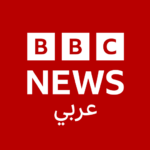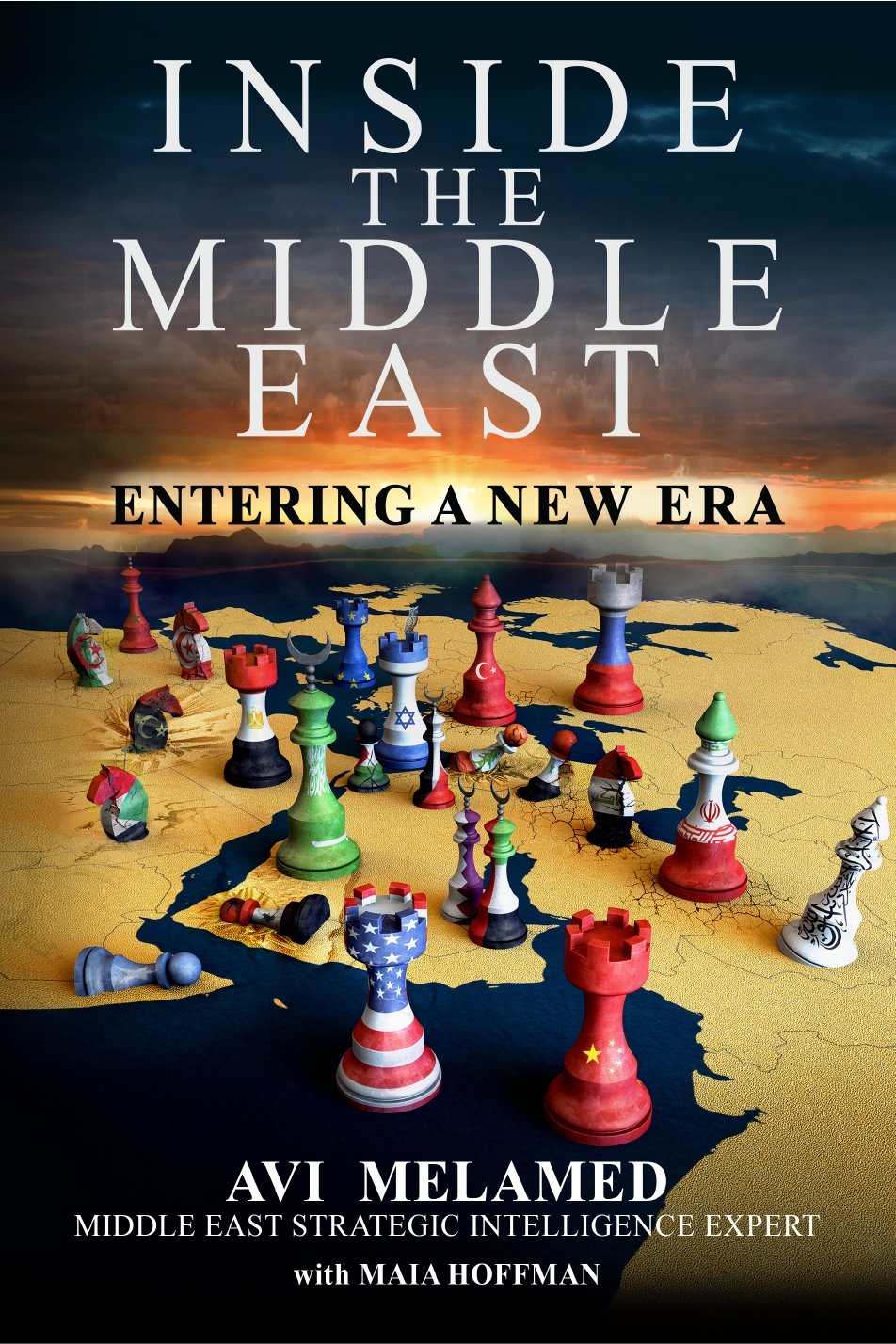|
Getting your Trinity Audio player ready...
|
Tasting the Bitter Pill of Reality: Hamas’ New Political Pact
- Information:
In August 2014 I published an article entitled “Operation Protective Edge: Exiting to a New Space” in which I analyzed the ramifications of the summer of 2014 war between Hamas and Israel. In that piece I wrote ”…As a result, Hamas enters a long process where it has to revise its way, policy, strategy, direction and goals. And this process will be encompassed with turbulence inside Hamas.”
In a press conference held in Doha, Qatar on May 5th 2017, Khaled Mash’al, who was then Chief of Hamas’ Political Bureau, presented Hamas’ new political document.
The document consists of 42 articles, and is formally entitled “A Document of General Principles & Politics”.
Below are major quotes from the document published on Hamas’ official website:
- The Islamic Resistance Movement “Hamas” is a Palestinian Islamic national liberation and resistance movement. Its goal is to liberate Palestine and confront the Zionist project. Its frame of reference is Islam, which determines its principles, objectives and means.
- Palestine is the land of the Palestinian people. It is an Arab Islamic land, which extends from the River Jordan in the east to the Mediterranean in the west and from Ras Al-Naqurah in the north to Umm Al-Rashrash in the south, (i.e. the whole territory of Israel – author’s note) is an integral territorial unit.
- Palestine is a land that was seized by a racist, anti-human and colonial Zionist project that was founded on a false promise (the Balfour Declaration), on recognition of a usurping entity and on imposing a fait accompli by force.
- Palestine symbolizes the Resistance that shall continue until liberation is accomplished, until the return is fulfilled and until a fully sovereign state is established with Jerusalem as its capital.
- The Islamic Resistance Movement “Hamas” is a Palestinian Islamic national liberation and Resistance movement. Its goal is to liberate Palestine and confront the Zionist project. Its frame of reference is Islam, which determines its principles, objectives and means.
- The Palestinian cause in its essence is a cause of an occupied land and a displaced people. The right of the Palestinian refugees and the displaced to return to their homes from which they were banished or were banned from returning to – whether in the lands occupied in 1948 or in 1967 (that is the whole of Palestine), is a natural right, both individual and collective.
- Hamas rejects all attempts to erase the rights of the refugees, including the attempts to settle them outside Palestine and through the projects of the alternative homeland. Compensation to the Palestinian refugees for the harm they have suffered as a consequence of banishing them and occupying their land is an absolute right that goes hand in hand with their right to return. They are to receive compensation upon their return and this does not negate or diminish their right to return.
- The Zionist project is a racist, aggressive, colonial and expansionist project based on seizing the properties of others; Hamas affirms that its conflict is with the Zionist project not with the Jews because of their religion. Hamas does not wage a struggle against the Jews because they are Jewish but wages a struggle against the Zionists who occupy Palestine. Yet, it is the Zionists who constantly identify Judaism and the Jews with their own colonial project and illegal entity.
- There shall be no recognition of the legitimacy of the Zionist entity.
- Hamas believes that no part of the land of Palestine shall be compromised or conceded, irrespective of the causes, the circumstances and the pressures and no matter how long the occupation lasts. Hamas rejects any alternative to the full and complete liberation of Palestine, from the river to the sea.
- However, without compromising its rejection of the Zionist entity and without relinquishing any Palestinian rights, Hamas considers the establishment of a fully sovereign and independent Palestinian state, with Jerusalem as its capital along the lines of the 4th of June 1967, with the return of the refugees and the displaced to their homes from which they were expelled, to be a formula of national consensus.
- Hamas affirms that the Oslo Accords and their addenda contravene the governing rules of international law in that they generate commitments that violate the inalienable rights of the Palestinian people. Therefore, the Movement rejects these agreements and all that flows from them, such as the obligations that are detrimental to the interests of our people, especially security coordination (collaboration).
- Resisting the occupation with all means and methods is a legitimate right guaranteed by divine laws and by international norms and laws. ….. Resistance and jihad for the liberation of Palestine will remain a legitimate right, a duty and an honour for all the sons and daughters of our people and our Ummah.
- Hamas rejects all the agreements, initiatives and settlement projects that are aimed at undermining the Palestinian cause and the rights of our Palestinian people.
- Background:
Hamas is a Sunni Islamic Palestinian Arab movement formally established in December 1987.
The word Hamas means “A Religious Enthusiasm” and it is also the initials of “Harakat Al-Muqawama Al Islamiyah” – The Islamic Resistance Movement. (I have discussed the concept of Al-Muqawama in many articles.
Hamas’ official Charter which it presented in 1988, defines Hamas as a branch of the Muslim Brotherhood (MB) (the largest movement of Political Islam) movement in Palestine.
In its Charter, suffocated with extreme expressions of hatred towards Jews and Israel – as well as the West, Hamas presents itself as “an Islamic movement on a global mission to establish Islamic rule globally through a Jihadist mission – fighting Jews and the Crusaders (i.e. Western civilization) “
In September 2005 Israel unilaterally withdrew from the Gaza Strip and Israeli presence in the Gaza Strip came to end when Israel evacuated all Israeli settlements and settlers from the Gaza Strip. At that time, Israel handed the rule in the Gaza Strip over to the Palestinian Authority (PA).
In June 2007, the Ezzedeen Al-Qassam Brigades, Hamas’ military wing and the armed branch of the Islamic Resistance Movement (Hamas) executed a violent and bloody military coup in the Gaza Strip against the PA, overthrew them, and terminated the rule of the PA in Gaza.
Since 2007 Hamas rules the Gaza Strip.
During the decade that has passed since Hamas’ military coup, Hamas who rules the Gaza Strip with an iron fist, has launched dozens of thousands of rockets on Israeli cities and communities. These attacks have led to a number of massive military collisions between Hamas and Israel, resulting in thousands of Palestinians and hundreds of Israelis being killed, and causing massive destruction to civil infrastructure and residential areas, mostly within the Gaza Strip.
The last military round between the sides occurred in the summer of 2014 and lasted for fifty days.
- Analysis:
What is the background and circumstances for Hamas’ new political document?
Hamas is facing mounting problems on multiple fronts – politically, domestically, regionally, and globally. The document is intended to help Hamas address these growing challenges in these four arenas.
What are these arenas and how does Hamas’ new political document allegedly help Hamas address the challenges?
- a) The Political arena:
The roots of Hamas and its ideology lie in the Muslim Brotherhood (MB).
Hamas defines itself as a branch of the MB movement in Palestine.
The MB is the largest movement of Political Islam, and the MB is the largest Sunni Islamist mass movement.
The MB envisions the establishment of a global Islamist entity known as The Caliphate, that will be ruled and guided by the principles of the Islamic religious codex otherwise known as Shari’ah.
One of the results of the dramatic events known as “The Arab Spring” which have taken place in some Arab states (Egypt, Libya, Syria, Tunisia, Yemen) since late 2010, was that the Muslim Brotherhood achieved unprecedented political wins resulting in the establishment of Muslim Brotherhood led governments in Egypt and Tunisia and an unprecedented political momentum of the MB branches in states like Jordan, Kuwait, Morocco and others.
However, the momentum and achievements did not last long.
Within a year, the Muslim Brotherhood lost its rule in both Egypt and Tunisia, and its momentum was thwarted across the region.
The MB realized that its failure to hold onto power in Egypt and Tunisia, and its loss of momentum in other parts of the Arab world, partially stemmed from its dogmatic ideology. MB leaders throughout the region came to the conclusion that if the Muslim Brotherhood wanted to have a political impact then the movement must be able to dialogue with other political groups.
And they also realized that such dialogue would involve political compromises.
That realization inevitably resulted in a deepening ideological and political crisis within the MB. Crises which were manifested by an inner-split of the MB branches in Egypt and Jordan, and which resulted in the formation of roughly speaking two camps within the Muslim Brotherhood – the dogmatic-ideological camp on the one hand, and the politically-pragmatic camp on the other hand.
This split within the Muslim Brotherhood percolated into Hamas, resulting in a growing political dispute within Hamas regarding its path and direction.
- b) The Domestic arena:
In June 2007, in a violent coup, Hamas terminated the rule of the Palestinian National Authority (PNA) in the Gaza Strip. The battle raged for five days – more than one hundred Palestinians were killed and over five hundred were wounded.
A review of ten years of Hamas rule in the Gaza Strip portrays the scale of Hamas’ failure, as a result of its militant strategy, path and actions.
Thousands of Palestinians have been killed as an outcome of Hamas’ military collisions with Israel, the civil infrastructure has been ruined due to Hamas perpetrating endless rounds of violence which have resulted in nothing more than more death and more misery.
Hamas’ attempts to gain political and tangible achievements through the use of violence by launching repeated military rounds against Israel has failed. None of Hamas’ demands – neither lifting the siege on Gaza Strip, nor operating a harbor, nor building an airport, nor permanently opening the Rafah crossing connecting Gaza to Egypt have been fulfilled.
The Gaza Strip, under Hamas’ rule, has sunken into a depressing reality of growing rates of unemployment, deepening social and economic challenges, isolation, deepening frustration, and a hopeless future.
A decade after it took over the Gaza Strip, Hamas’ way has proven to be a dead-end.
Failing to address the growing challenges of everyday life inside Gaza has resulted in growing discontent and unrest among the people of Gaza, which could explode in Hamas’ face.
- c) The Regional Arena:
Hamas is a Sunni Muslim Palestinian Arab movement – and as such, it is an integral part of Arab world in general, and is a part of the Sunni-Muslim world in particular.
The major factor shaping the Middle East today and into the foreseeable future is the growing, widening escalating Iran-Arab and Sunni-Shi’ite power struggle, stemming from Iran’s aggressive expansion policy. As of 2017, there are eight arenas of that power struggle – some are massively bleeding. The arenas are: Bahrain, the Gaza Strip, Iraq, Lebanon, Syria, Yemen, three islands near the Hormuz Strait occupied by Iran, and the Iranian nuclear program.
The Muslim Sunni world in general, and the Arab Sunni states (and mostly the Arab Gulf states) in particular, are alarmed by the growing and aggressive Iranian expansion and the chaos it perpetrates and perpetuates to achieve its goal of being the regional superpower. Therefore, the primary goal of the Arab states today is to block Iran’s expansion and to do whatever they can to ensure stability in the region.
That is why today Arab Gulf states convey a clear message – any factor siding with Iran jeopardizes an Arab retaliation and sanctions. (On the Iranian-Arab struggle read for example my January 2017 article “A Growing Whirlpool of Violence: The Middle East Legacy of Barack Obama”)
Iran has generously armed financed, and supported Hamas since its establishment in 1987.
That alliance partially came to an end because of the war in Syria.
Criticized by its brothers – the Arab Sunni states – for its close relations with Iran which occupies parts of Syria and kills Syrian Sunnis as well as Palestinians in Syria (according to a report issued in June 2017 by a Palestinian NGO based in London, more than 3500 Palestinian have been killed thus far in the war in Syria) Hamas distanced itself from Iran throughout the year of 2012.
Iran retaliated by cutting its support for Hamas’ civil and economic projects in the Gaza Strip. But it did not stop arming and financing Hamas’ military wing – the Ezzedeen Al-Qassam Brigades.
The end of Iranian funding for civil projects in the Gaza Strip substantially harmed Hamas, as its ability to address the growing challenges inside the Gaza Strip was diminished (for more on that matter read my July 2014 article “Muqawama, Money, Missiles”).
As the Iran-Arab power struggle escalates, Hamas faces an increasing dilemma regarding its relations with Iran.
One the one hand, the rehabilitation of the civil infrastructure and the residential areas in the Gaza Strip demolished as an outcome of the Hamas-Israel war in the summer of 2014, as well as the opening of the Rafah crossing connecting the Gaza Strip to Egypt, are of utmost importance for Hamas. And the keys to fulfill those interests are mostly in the hands of the Arab Gulf States and Egypt – not Iran.
On the other hand, Hamas is eager to resume the close alliance with Iran so Iranian money starts flowing into Gaza again. But Hamas is keenly aware that such a move will result in a painful Arab retaliation. In addition, anti-Iranian sentiments are very strong on the Arab street – including among Palestinians. Reportedly, according to a poll published in March 2017 by the Arab Center for Research and Policy Studies in Qatar, 70% of Palestinians express resentment and anger with Iran. Hamas’ leadership is tuned to these sentiments.
Hamas’ dilemma has resulted in the creation of two opposing camps within Hamas. The Iranian affiliated camp and the Arab affiliated camp.
The struggle between the Iranian affiliated and Arab affiliated camps results in tension within Hamas – friction which is exacerbated by the escalating Muslim Brotherhood inner conflict, also is existent within Hamas – between the dogmatic-ideological camp and the politically-pragmatic camp.
The tensions between the Iranian affiliated camp and the Arab affiliated camp are reflected in the most recent shift among the most senior leadership of Hamas.
In February 2017 Yahya Sinwar, known as the founding member of the Hamas military wing – the Ezzedeen Al-Qassam Brigades, who is formally designated by the US as terror organization, and has spent years in Israeli jail for killing Arabs who collaborated with Israel, and was one of the more than 1,000 Palestinian prisoners released in exchange for abducted Israeli soldier Gilad Shalit, was secretly elected Prime Minister in the Gaza Strip. Sinwar and the people in his close circle like Mahmud Al-Zahar, Khalil al-Khayeh, and Salah Bardawil and Marwan ‘Issa – Hamas’ Military Chief of Staff and the new Head of the Ezzedeen Al-Qassam Brigades, are pressuring to fully resume relations with Iran.
In May 2017, Ismail Haniyeh, Hamas’ former Prime Minister in the Gaza Strip, was elected the new Chief of Hamas’ Political Bureau. Chief of Hamas’ Political Bureau is the highest executive position in Hamas. Haniyeh replaced Khaled Mash’al who had held the position from 1996 through May 2017.
Reportedly, when Haniyeh was Prime Minister in the Gaza Strip, he opposed the Ezzedeen Al-Qassam Brigade’s demand to fully resume the honeymoon with Iran. Different from Sinwar, who was imprisoned in Israel for long time, and was therefore exempted from the task of running the Gaza Strip, Haniyeh, as Hamas PM in the Gaza Strip, had to actually rule – and thus, had to practice political compromises and pragmatism.
Isma’il Haniyeh, as the Chief of Hamas’ Political Bureau, must navigate between the Arab affiliated camp and the Iran affiliated camp within Hamas. Failing to ease the tensions between the two camps will deepen Hamas’ crisis. Thus, it is possible he will carefully and gradually attempt to nurture improving relations with Iran, yet without risking an Arab retaliation. If he needs to make a choice, Haniyeh will likely lean towards the Arab states. This might continue to pit him against the newly elected Prime Minister and the Ezzedeen Al-Qassam Brigades, the military establishment of Hamas.
Another significant regional development which exacerbates Hamas’ challenges has to do with two other major sponsors of Hamas – Turkey and Qatar.
Recep Tayyip Erdoğan, the President of Turkey which is Muslim Sunni, but not Arab – aspires to be the dominant leader of the Sunni world. As part of his strategy to achieve his goal, Turkey, under Erdogan, has been a major political sponsor of the Muslim Brotherhood. As such, Turkey supports Hamas – partially providing financial support, but primarily by leading anti-Israel campaigns, harboring Hamas senior leaders including military commanders who used Turkey as a base to plan, coordinate and expedite terror attacks against Israel, and conducting public relation campaigns such as the launching of flotillas to the Gaza Strip.
However, as a result of increasing challenges facing Turkey – political unrest, the reigniting of the war against the Turkish Kurds in southeast Turkey, Turkey’s growing financial and economic problems, developments in the war in Syria – such as the growing presence of Iran and its proxies in Syria right next to Turkey and the strengthening of the Kurds in northern Syria – both serious threats to Turkey, coupled with the need for Erdogan to coordinate his moves with the Trump administration, all have contributed to Turkey limiting its support for Hamas – and it is unlikely that support will exceed diplomatic and solidarity sentiments on the part of Turkey with the people of Gaza.
Qatar – a country who also aspires to be a leader and a central player in the region, is a main financial sponsor of Hamas. Over the last decade, Qatar has poured substantial funds into the Gaza Strip – building residential areas, hospitals, civil infrastructure, paying Hamas’ official salaries and more.
In June 2017, eight Muslim States – Bahrain, Egypt, Libya, the Maldivian Islands, the Republic of Mauritius, Saudi Arabia, the United Arab Emirates, and Yemen announced that they were cutting relations with Qatar. In an unprecedented move, a full aerial, land and naval siege was imposed by the Arab Gulf States (with the exception of the Sultanate of Oman and Kuwait) on Qatar.
What was the reason for this extreme act of isolation of Qatar?
There is growing the discontent among Saudi Arabia and Egypt regarding some aspects of the Qatar regional policy – specifically its support for the Iranian-backed Houthi rebels in Yemen, its support for the Muslim Brotherhood (including of course Hamas), as well as its friendly approach towards Iran in general.
The damage to Qatar by the siege is significant. It has rendered Qatar practically isolated from the world. Qatar needs to find a way to reconcile with its neighbors, the Arab Gulf states.
Lifting the siege on Qatar and resuming the relations are dependent upon a real shift in Qatar’s policy. One of the demands made by the Saudis and Egypt is to cut its support for the Muslim Brotherhood and Hamas.
In order to save itself, Qatar will not hesitate to throw the less important players under the bus. Hamas militants who live in Qatar were asked to leave.
Qatar’s crisis inevitably further exacerbates Hamas’ challenges.
As of now, and into the foreseeable future, Hamas’ faces two profound regional dilemmas: they need to decide which path they are choosing – Iran or the Arab world; and they know that their traditional core regional sponsors are, and will likely continue to be, engaged with their own major challenges. Thus, their ability or inclination to substantially support Hamas is, and will be, limited.
Hamas knows how to read the map, and understands that the regional conditions present profound challenges, further complicating an already bleak reality.
- d) The Global Arena:
Though formally defined by major Western powers as a terror organization, in recent years Hamas has successfully branded itself among certain circles in the West – such as academia, human rights, non-profit, and labor unions as a legitimate factor who fights occupation.
Hamas knows that their image has been tainted due to the rise of ISIS and the terror attacks conducted by Muslims in Europe and the United States. Hamas realizes that people who are intimidated by Islamic radicalism and terror make no differentiation between ISIS masked militants beheading people and Hamas masked militants executing people in broad daylight in the Gaza Strip.
The change of administration in the United States further undermines Hamas’ attempt to gain legitimacy in the international community. Different from President Obama, President Trump has made it clear that militant Islam is the major source of terror. In his speech during his visit to Saudi Arabia (May 21, 2017) President Trump declared that “The true toll of ISIS, Al Qaeda, Hezbollah, Hamas, and so many others, must be counted not only in the number of dead. It must also be counted in generations of vanished dreams.”
In 2017, Hamas’ attempts to label itself as legitimate factor, and to distance itself from terror groups has failed.
The reality is that, as of now – and into the foreseeable future, the serious challenges Hamas faces politically, domestically regionally and globally, cause a serious crisis for Hamas in two major ways:
First, the challenges result in tensions and frictions within Hamas.
Second, these challenges substantially limit Hamas’ maneuvering capacities to address the mutli-layered and complex issues it needs to address in order to maintain its power.
Hence, Hamas’ new political document aims to address the above issues.
First, on the political front, the document strives to minimize the tensions and narrow the differences in ideology and outlook within Hamas itself by redefining the common denominators accepted by the different camps within Hamas.
Second, the document seeks to portray Hamas as a pragmatic factor, and that way to increase Hamas’ maneuvering abilities hence increase its options to overcome its challenges on the domestic, regional, and global front.
***********
In this new political document, Hamas has expressed its willingness – for now – to accept the existence of a Palestinian state within the boundaries of 1967.
At the same time, Hamas makes it very clear in the new document, that it will not recognize Israel’s right to exist and will continue its armed struggle against Israel.
How do Middle East factors view Hamas’ new political document?
The common reaction in the Arab world to Hamas’ new political document can be characterized as skeptical and doubtful.
Many Arab analysts view Hamas’ new political document as merely a “cosmetic change” stemming from its growing challenges.
Furthermore, there was barely any official reaction or response on the part of Arab states acknowledging the document.
One interesting perspective to consider, is the open exchange of punches which have occurred since the release of the document between Hamas and the Muslim Brotherhood – its mother movement.
The Muslim Brotherhood is clearly very unhappy with the fact that Hamas’ new political document – different from its 1988 Official Charter and Ideological Pact – does not mention Hamas’ relationship with the Muslim Brotherhood.
One example of the Muslim Brotherhood’s consternation was an insulting message sent by Zaki Bani Arshid, a prominent leader of the Muslim Brotherhood branch in Jordan, declaring that the “Palestinian struggle for independence started way before Hamas’ appeared.” Khaled Mash’al, until recently Chairman of Hamas’ Political Bureau, replied by saying “Political Islam movements should be inspired by Hamas’ ability to re-evaluate its way” – hinting that the Muslim Brotherhood is antiquated.
Israel views Hamas’ political document as nothing more than a PR stunt, a result of the tough circumstances and conditions Hamas faces. The Israeli Prime Minister Benjamin Netanyahu, literary dumped Hamas’ new political document in a garbage can. Indeed, reading Hamas’ new political document leaves no place for doubts or misunderstandings – Hamas has not – and will not – abandon its demand and goal to eliminate Israel.
One other notable aspect is Iran’s silence.
The Mullah Regime is probably not pleased with Hamas’ new political document.
That assumption is backed by two facts. One is in the document, and the other is the reaction of another Iranian proxy in the Gaza Strip.
One, Article 42 of Hamas’ new political document reads that “Hamas rejects the attempts to impose hegemony on the Arab and Islamic Ummah (The Islamic global community)” that is a clear criticism of Iran’s aggressive, violent expansion at the expense of Syria, Iraq, and Lebanon – all Arab states.
Two, Iran’s current closest Palestinian proxy (since Hamas broke away as a result of Iranian actions in Syria) – the Islamic Jihad in Palestine (IJIP) – formally expressed “disappointment” with Hamas’ new political pact. IJIP’s statement can be viewed as Iran’s indirect way of expressing its discontent.
However, Iran made no formal expression of discontent.
What is the reason for Iran’s silence?
The Iran-Hamas rift, and Hamas’ eventual detaching itself from Iran in 2012 due to events in Syria, took place when Khaled Mash’al was the Chairman of Hamas’ Political Bureau – the most senior executive position in Hamas. Iran made it clear that in order to restore their relations with Hamas, Mash’al needed to be ousted from his position.
With the election of new Hamas leadership in the Gaza Strip, much more friendly to Iran – led by Prime Minister Yahya Sinwar and Marwan ‘Issa, Mahmud Al-Zahar, Khalil al-Khayeh, and Salah Bardawil – Iran is willing to open a new page in its relations with Hamas. Therefore, Iran openly criticizing Hamas’ new political document may be counterproductive to Iran’s interest to repair its relations with Hamas.
Why is it important for Iran to repair the relationship with Hamas at this point?
The answer has to do with another – by far more important issue for the strategic interest of Iran than the Gaza Strip, and that is the Syrian arena.
Bashar al-Assad is Iran’s most important strategic partner. Iran has increasingly growing concerns regarding the possibility of a United States-Russian-Turkish understanding resulting in an arrangement in Syria that will compromise Assad’s rule and thus weaken Iran’s influence in Syria. Should Assad lose power it will jeopardize Iran’s investment (and on the ground achievements) in creating the Iranian corridor from Iran, through Iraq, Syria and Lebanon to the Mediterranean Sea, a plan which is in their words is “vital for Iran’s strategic interest and national security” and a critical step towards attaining the Iran’s goal of becoming the leading regional super power.
Alarmed by the potential of an agreement in Syria that might jeopardize Iran’s hegemonic goals, the Mullah regime seeks to counter or prevent such a development by using any cards at its disposal – and Hamas is a potential card. By encouraging the Ezzedeen Al-Qassam Brigades, Hamas’ Military wing, to launch small scale military attacks on Israel (small enough to not result in a massive eruption) Iran will be able to send a message that if its interests in Syria are ignored, it can “activate” proxies-like Hamas or IJIP in the Gaza Strip to set huge a fire, which is contrary to the interests of regional players such as Egypt, Jordan and the Arab Gulf monarchies who want stability.
**************
Does Hamas’ new political document reflect a genuine shift in Hamas’ ideology?
The answer-in short is – no.
It should be clear that Hamas’ new political document does not replace Hamas’ only formal ideological pact – its 1988 Charter.
In that Charter – suffocated with extreme expressions of hatred towards Jews and Israel, as well as the West- Hamas presents itself as “an Islamic movement on a global mission to establish Islam rule globally through Jihadist mission fighting Jews and the Crusaders (i.e. Western civilization) “.
The fact that Hamas’ new political document does not include the hateful language towards Jews and Western civilization does not mean Hamas has abandoned its hardcore radical and violent ideology.
Is Hamas’ new political document significant?
Hamas’ new political document is not totally insignificant for a couple of reasons.
First, in the context of the Palestinian arena.
Hamas’ new political document is a notable milestone in the context of the political and ideological struggle between the two major Palestinian-movements: Hamas on the one hand and Fatah on the other.
Why is it a milestone?
Hamas – “Harakat Al-Muqawama Al Islamiyah” “The Islamic Resistance Movement,” is a Sunni Political Islamic Palestinian Arab movement whose ultimate vision is the creation of an Islamic global entity – The Caliphate.
Hamas ideologically completely rejects the concept of an independent national state and statehood. Thus, ironically, Hamas’ ultimate vision unequivocally objects to the creation of an independent Palestinian state that is based on national identity.
Hamas (an adherent of Political Islam) – who currently rules the Gaza Strip – offers Palestinians an identity and path centered around two major guiding values: Al-Muqawama Al-Musallaha – “The Armed Resistance” (i.e. militarily fighting Israel until it will be eliminated) and the application of Shari’ah, the Islamic religious law – as the source for government and legislation and as the moral code of everyday life of the Palestinians both as a society as well as individually. According to Hamas, adopting Islamic law as the guiding code for an individual’s everyday life is Allah’s will, and abiding by his law is therefore mandatory – not meant to be questioned, nor to be up to an individual’s choice.
Fatah – Haraka Tahrir Filastin is the initials of the words – “The Movement for the Liberation of Palestine” – backwards. Fatah is also a word which is associated with successful military raids during which large areas were occupied and conquered by Muslims and the local people subdued to Islam.
Fatah is the largest and most powerful party within in the Palestinian National Authority which rules over parts of the West Bank.
Fatah offers the Palestinians a national identity and path centered around two major guiding values: Al-Muqawama Al-Madaniyah – “The Civil Resistance” (i.e. forcing Israel to comply with Palestinian demands through the use of political and diplomatic measures – which, according to radical factors within Fatah – will eventually result in the elimination of Israel) and the application of a Parliamentary political structure inspired by civil society and Western affiliated codes as the source for government and legislation and as the moral code of everyday life of the Palestinians both as a society as well as individually. According to Fatah, adopting Islamic law as guiding code for an individual’s everyday life is therefore a personal choice and decision.
The next example manifests the difference between the Hamas and Fatah outlook:
The overwhelming majority of Palestinians are Muslims. Islam prohibits the consumption of alcohol. Yet, in Ramallah, the power center of the Palestinian Authority you can enjoy “Happy Hour.” While in the Gaza Strip, under Hamas’ rule, the consumption of alcohol is strictly prohibited.
Ideologically, Hamas does not accept the legitimacy of any political outlook and system other than full implementation of the Shari’ah (Islamic religious law). Hence, Hamas envisions its rule over the Palestinians as a “one man show” – Hamas, carrying out Allah’s will, is to be the only and sole governing body.
Hamas’ willingness, as stated in the new document to accept – for now – the establishment of a Palestinian State within the boundaries of 1967 – a concept adopted by Fatah, Hamas’ political and ideological rival, means that Hamas is willing (though temporarily) to compromise – for now – the concept of “their one man show” – and to share power. For Hamas, it is a taste of the bitter pill of reality.
One could then expect that President Mahmoud ‘Abbas, who is also the leader of Fatah and a bitter opponent of Hamas, would in turn reciprocate Hamas’ expression of willingness to compromise with generous gestures.
In fact, it’s exactly the opposite.
Mahmoud ‘Abbas knows Hamas is in crisis, and that the only reason it is showing signs of willingness to compromise its ultimate objectives (for now) is because Hamas is desperate and trying to alleviate the pressure it experiences. Like a boxer in the ring, ‘Abbas takes advantage of the opportunity to further punch Hamas, pushing it to the ropes.
‘Abbas sends out threatening messages to Hamas, and is applying tough measures further pushing Hamas into the corner. For example – the Palestinian Authority announced it would no longer pay Israel for the electricity Israel supplies to the Gaza Strip. In addition, the PA said it would no longer pay the salaries to 250 Palestinians – mostly Hamas militants – who were in Israeli jails and were released by Israel.
One should view ‘Abbas’ tough line in the context of the ideological and political power struggle between Fatah and Hamas.
‘Abbas argues that Hamas’ rule and path is a dead-end street, resulting in more misery for the Palestinians and particularly for the people of Gaza who live under Hamas rule. Hamas’ compounding crises, which result in increasing challenges for the people in the Gaza Strip, supports ‘Abbas’ argument. Therefore, ‘Abbas has no interest in throwing Hamas a life line, even if it would improve the lives of the Palestinians in Gaza.
Hamas’ compromise is not insignificant. Why?
In my April 2016 article “Thinking Out of the Box: A Realistic Solution to the Israeli – Palestinian Conflict” I wrote: “…Hamas desperately needs a ladder that enables it to adopt a more pragmatic approach that will allow it to compromise its control in Gaza without formally compromising its ideology.”
Hamas’ new political document is that ladder. It is the result of necessity, not an ideological change.
************************
Is the next military round between Israel and Hamas right around the corner?
Hamas leaders and spokesman have recently officially threatened that due to the growing challenges inside the Gaza Strip, a new military round between Hamas and Israel is just around the corner.
How serious is that threat?
In the current conditions, Hamas has basically two cards to play with – one is to initiate a war – and the other is to threaten with war.
Given their dire situation, and understanding that initiating a new military round will result in even more severe outcomes to the Gaza Strip in comparison to the last round (summer of 2014), perhaps to the point it will jeopardize its rule over Gaza, Hamas is less inclined to adopt that option.
Threatening to initiate a war is Hamas’ way of signaling that it is looking for other ways to alleviate the pressure they are experiencing.
Thus, to the best of my judgment, at this point, Hamas – as opposed to starting another war – is more likely inclined to negotiate terms which will alleviate the pressure they are under.
A delegation of Hamas’ new leadership is currently visiting Egypt and is meeting with Egyptian senior security officials. The Egyptians are conveying a very clear message to the Hamas delegation: Egypt expects Hamas to keep the Gaza Strip calm and to play a stabilizing role.
Thus, in the evolving Poker game, the visit of Hamas leaders to Egypt is, in my evaluation, a precursor to a complex, delicate process which will unfold in the coming weeks which will informally set the terms that will enable Hamas to alleviate the pressure they are under without losing their dignity.
It is possible that process will include gestures made by Israel and Egypt (and Saudi Arabia – but their involvement will be in the background) which will alleviate the pressure inside Gaza Strip, and, will start a process which will lead – at a later phase – to the partial renewal of the PNA authoritative presence in the Gaza Strip.
What are the possible gestures?
Egypt could move to open the Rafah Crossing connecting Gaza to Egypt on a more frequent basis, and therefore allow goods and Gazans to flow between Egypt and Gaza.
Israel could expand the Fishing Zone for Gaza fisherman – fishing is one of Gaza’s leading income sources.
Israel, Egypt and the PNA can ensure that the supply of electricity to the Gaza Strip will continue and increase.
Saudi Arabia could quietly allocate funds to further rehabilitate the infrastructure in Gaza. Including funding of the expansion of the electricity infrastructure.
There are no free meals. The above gestures have a price tag – one that Hamas will have to pay.
Hamas understands that the price is not only its willingness to avoid a military move. The real price is Hamas’ willingness to enter a process that will lead at some point to a situation where Hamas will compromise its sole rule over the Gaza Strip – Hamas may have to share power in the Gaza Strip.
This could take various forms – for example, the Palestinian National Authority could -together with Hamas-oversee, or be present, at the Rafah crossing, PNA officials who were forced to resign following Hamas’ military coup in the Gaza Strip in 2007 could be re-employed, and perhaps there will be a joint Hamas-PNA bureaucratic Administration in the Gaza Strip.
The actualization of the gestures mentioned, or some of them, over the upcoming weeks will indicate that such a deal is underway.
- Conclusion and Prediction:
It is often portrayed in the West that the Israeli-Palestinian issue impacts the Middle East. In fact, the opposite is true. Events in the Middle East impact the Israeli-Palestinian issue.
Hamas’ policy, strategy, and identity are first and foremost shaped by the major factors that shape the Middle East today and into the foreseeable future and those factors are: the Iranian-Arab power struggle; the Sunni-Shi’ite power struggle; the inner challenges of the region’s societies; and the struggle over path, identity and direction within the Arab world of which Hamas is a part.
Hamas’ new political document is a clear example of the Middle East reality.
The tensions and friction within Hamas will continue yet, to my assessment, will not result in an inner split.
Hamas’ new leadership will probably respond positively – yet cautiously and in a very calculated and reserved manner – to an Iranian possible rapprochement. However, in my evaluation, it is more likely that Hamas’ regional policy will lean towards Arab states interests.
I also evaluate the odds for a new Hamas – Israel war within the upcoming weeks is rather low.
If you want to have a better understanding of the news and what really drives the unfolding events…
Read the latest book of Avi Melamed,
INSIDE THE MIDDLE EAST | ENTERING A NEW ERA, available now >>>
Follow me on Twitter @AviMelamed; Facebook @InsideTheMiddleEast; for more Videos on YouTube https://www.youtube.com/c/AviMelamed
I can always be reached at Av*@********ed.com
































































